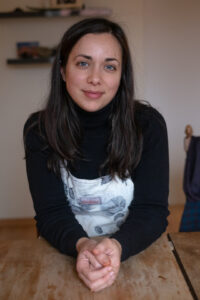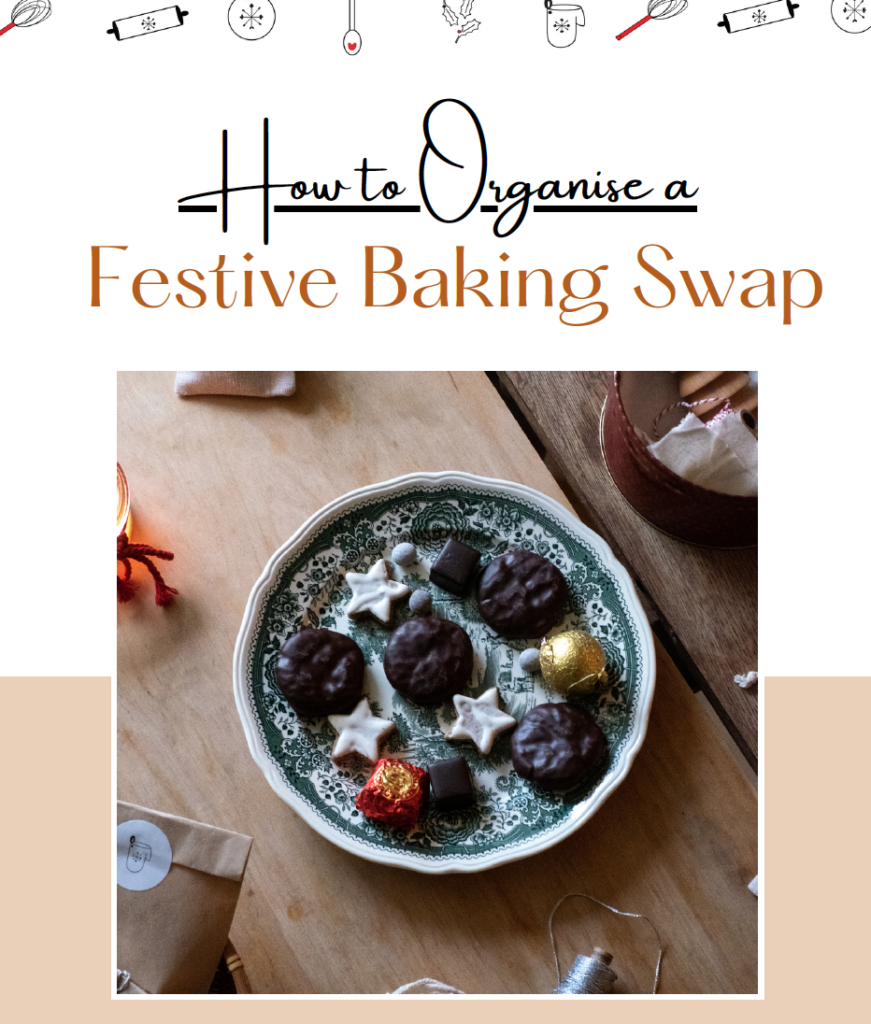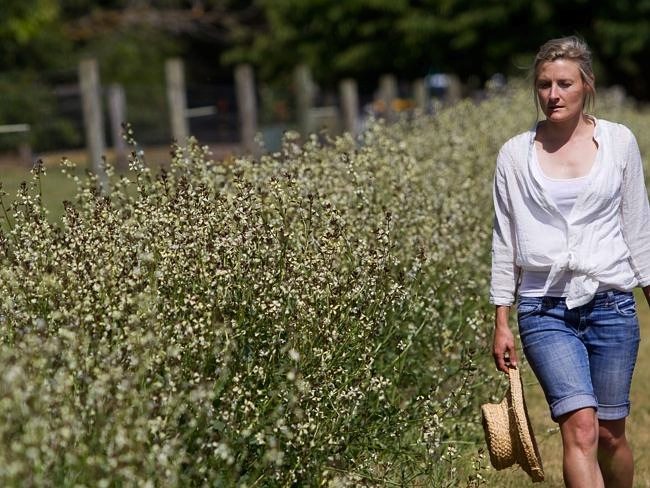 Rocket flower is a popular savoury variety – image credit: The Weekly Times Farm Magazine
Rocket flower is a popular savoury variety – image credit: The Weekly Times Farm Magazine
In our latest Foodie Profile, we chat to edible flower grower, Lauren Richardson of Flowerdale Farm. We ask her about the process of growing edible flowers, her journey in the industry and the history and growing trend behind edible flowers. Lauren also shares a delicious recipe specially created for Flowerdale Farm using her favourite edible flower. JC x
 A pansy patch ‐ “All our staff feel very lucky to be able to work with such a beautiful product” says Lauren Richardson – image credit – The Weekly Times Farm Magazine
A pansy patch ‐ “All our staff feel very lucky to be able to work with such a beautiful product” says Lauren Richardson – image credit – The Weekly Times Farm Magazine
1. Lauren, could you tell us about your journey in becoming an edible flower grower?
My journey into growing edible flowers began in 2010, Flowerdale Farm, a wholesaler of high end hydroponic and specialty produce, were increasingly being asked by Melbourne chefs to supply them with various edible flower varieties, such as rose petals and nasturtiums. Unable to find a high quality supplier of this product locally we began meeting these sporadic requests for small orders with flowers we happened to be growing in our own gardens. Demand soon grew and we were inspired to investigate the food trend of edible flowers overseas, looking at products that were being grown in Spain, the Netherlands and California. This is how we identified a major gap in the local market for edible flowers and made the decision to grow the product commercially. Since we started producing edible flowers, demand for the product has increased rapidly and our range has expanded to over 30 varieties now available seasonally.
Initially, we established our edible flower production on a plot 10m by 10m in size at a site in Flowerdale where we also grow our snowpea shoots. We very quickly outgrew this location and relocated our production to a few acres of rich volcanic soil in Glenlyon. We have since expanded to a second hydroponic production site in Clyde. The two sites and their two very different growing systems allow us to produce a wider range of edible flowers throughout the year. Edible Flowers are now a major product line for Flowerdale Farm.
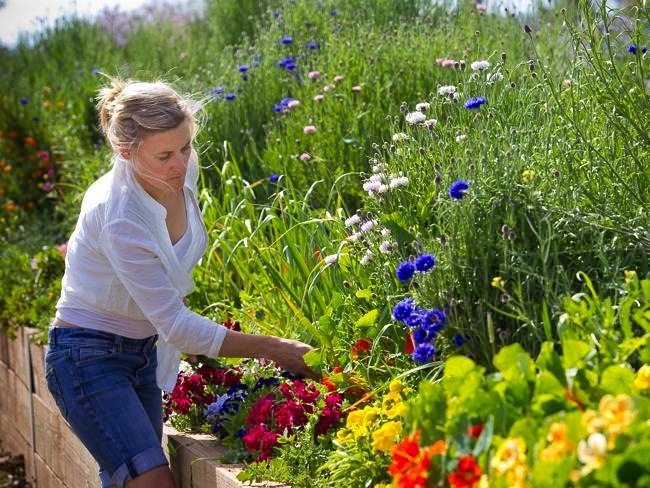 Lauren Richardson tends to an edible flower bed at the organic farm in Glenlyon – image credit: The Weekly Times Farm Magazine
Lauren Richardson tends to an edible flower bed at the organic farm in Glenlyon – image credit: The Weekly Times Farm Magazine
2. Can you describe the Flowerdale Farm for us, and what your work involves?
We have two farms where we produce our edible flowers, hydroponic greenhouses southeast of Melbourne and an organic farm just outside of Daylesford. The two sites complement each other with different climatic and growing conditions.
Our organic farm is a very natural site set amongst beautiful scenery of rolling hills with views of forest into the distance. It has stunning sunrises and sunsets and is really a beautiful environment to work in. The many rows of lush flowers create an abundance of colour which is loved by the local bee populations and there is a lot of wildlife around which has its pros and cons. The farm is in constant change due to the seasons and we aim to grow crops appropriate for the time of year. Many of our crops are annual and need constant replacing so the farm can look very different month to month.
Our greenhouses in Clyde are a spectacular sight, full of magnificent colour and as you walk past each bench you can smell the different flower varieties. All our staff feel very lucky to be able to work with such a beautiful product.
Initially my work largely involved being down on my hands and knees getting dirty, planting out seedlings, watering, weeding and constantly monitoring the plants for any threat of disease or pests. In the beginning all my time was spent harvesting the flowers as it is a very time consuming product to produce, but with the growth we have experienced in the last few years, we have developed a great team and my role has shifted dramatically to managing staff, developing new products, talking with customers and constantly planning for the next season.
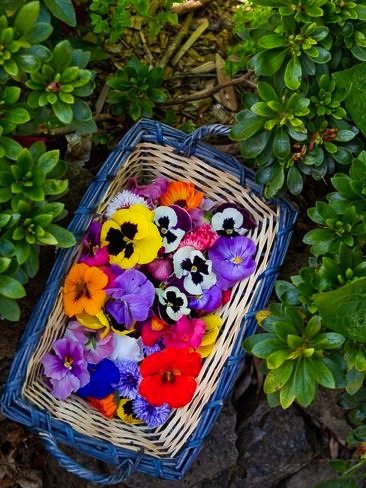 A basket of colourful Flowerdale Farm edible flowers – image credit: The Weekly Times Farm Magazine
A basket of colourful Flowerdale Farm edible flowers – image credit: The Weekly Times Farm Magazine
3. As far as you know what is the history behind edible flowers, how long have they been used in food?
The concept of using flowers in food is not new. There is definitely a current food trend in high end restaurants and upmarket cafes and bars to use edible flowers across all dishes. But this is not unique to Melbourne or Sydney. This recent trend started in Europe and that is what gave us the inspiration to make this produce available in Australia.
However, flowers have been used in food for many centuries across many cultures. In the Middle East flowers such as rose petals have been used to make rosewater and syrups, as well as the popular sweet Turkish Delight. Lavender, roses and violets were eaten in Roman times. Orange blossom, chamomile and calendula have a culinary history in Eastern cultures and edible flowers were popular in Victorian times as a symbol of extravagance and sophistication. Flowers widely used in Asian food include banana blossom and varieties of orchids and chrysanthemum. A lot of these edible flowers add unique aromatic character to food that can be appealing to chefs.
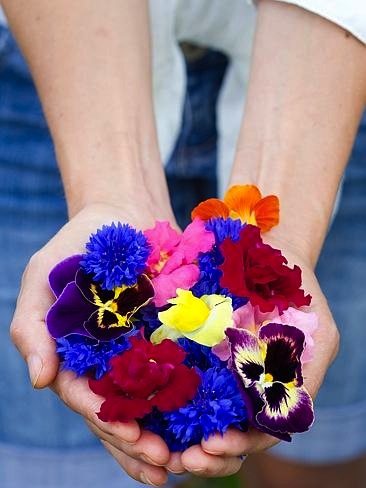 The delicate blooms are hand‐picked for leading restaurants throughout Australia, Asia and the Middle East – image credit: The Weekly Times Farm Magazine
The delicate blooms are hand‐picked for leading restaurants throughout Australia, Asia and the Middle East – image credit: The Weekly Times Farm Magazine
4. Edible flowers have become a huge trend the last few years – could you tell us about some of the varieties grown at the farm and around Victoria that we might not know are edible?
Obvious edible flower varieties that many people would already know about are nasturtiums, chive flowers, calendula, marigolds and elderflower. Pineapple Sage, which is a salvia plant, is one of my favourites. It has a distinctive tropical flavour and was featured in the mystery box challenge of the Masterchef Finale last year. Both contestants made beautiful dessert dishes with this flower. Scented geraniums, dianthus flowers and many herb flowers such as rosemary and fennel are also edible.
Of course not all species of the same family of flowers are edible and you need to be very well informed about edible flower varieties before you start picking and eating flowers from just any garden.
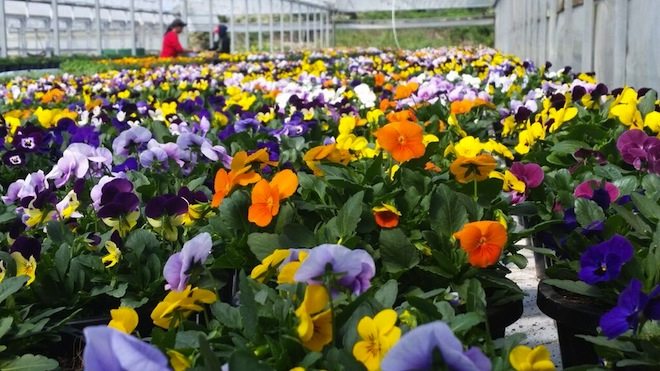 A sea of colour. Inside one of Flowerdale Farm’s edible Flower greenhouses – image credit: Flowerdale Farm
A sea of colour. Inside one of Flowerdale Farm’s edible Flower greenhouses – image credit: Flowerdale Farm
5. Flowerdale work closely with a lot of Melbourne chefs and restaurants, could you share some of the colours and varieties that are most requested?
Viola flowers are very popular with chefs at the moment because they are small and brightly coloured. They also have an aromatic perfume-like flavour that can be extracted from the flower to make sugar syrups and flavoured desserts.
Some of the herbal varieties such as fennel and rocket flowers are popular with chefs for savoury dishes. Purple and blue flowers are definitely the most requested colours.
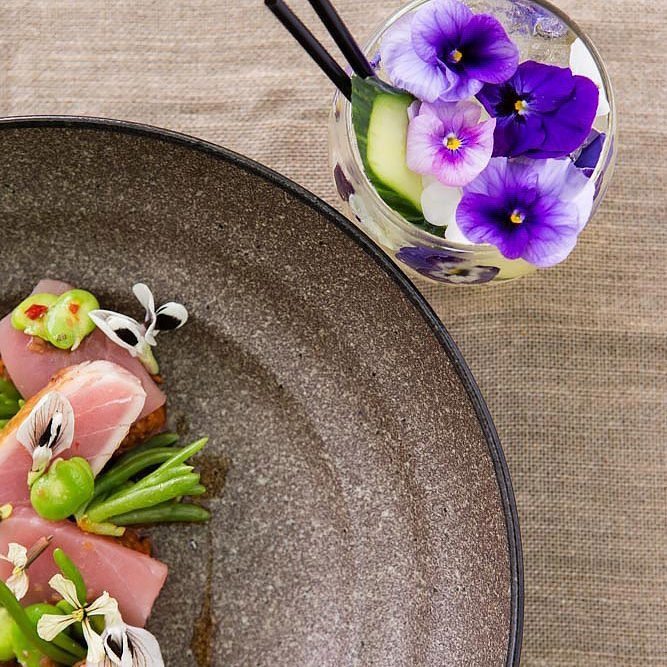 Edible flowers are popular for sweet and savoury dishes as well as cocktails – image credit: Southgate Melbourne
Edible flowers are popular for sweet and savoury dishes as well as cocktails – image credit: Southgate Melbourne
6. You also ship your flowers overseas, where are some countries and restaurants your Australian flowers are being served?
We send a lot of flowers to Dubai and the Maldives, as well as Singapore and Bali. We also get frequent requests to grow specific varieties for restaurants. We started producing our “apple blossom” variety on request from Heston Blumenthal’s Melbourne restaurant Dinner by Heston and we get a lot of requests for flowers from the TV series Masterchef. The Melbourne spring racing carnival is a very busy time for our flowers which appear in many of the marquees.
6. Apart from actually eating the flowers, how else can they used? (ex. colouring cakes or rice, drying them for tea, etc)
I love to make syrups by infusing the flowers in sugared water and extracting their delicate flavour. Roses, viola, pansy, elderflower and snapdragons are great for this. The petals of roses, chamomile, cornflower, violets, calendula can be dried to make cleansing tisanes and teas. Violas and pansies can be sugar coated to make beautiful cake decorations. I love creating unique and interesting cocktails with rose petals, violets, violas and pineapple sage.
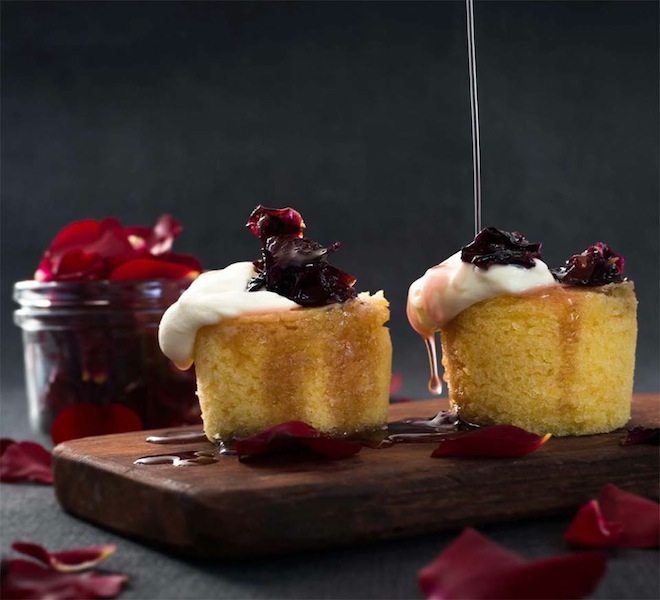 Rose Syrup Puddings – image credit: Alyce Alexandra Cookbooks
Rose Syrup Puddings – image credit: Alyce Alexandra Cookbooks
7. Do you have a recipe using edible flowers that you could share with our readers?
This recipe was created for us by Alyce Alexandra and is featured in their Flowerdale Farm e‐book, Essential Ingredients. I love it because it celebrates my favourite edible flower, rose petals, as the hero of the dessert.
Please note this recipe requires a Thermomix (TM).
Rose Syrup Puddings
Serves 6 ‐ vegetarian
200g raw sugar
170g water
120g Flowerdale Farm rose petals
1 tsp vanilla extract
- Place 150g sugar, 100g water and rose petals in TM bowl, cook for 15 minutes, 100°C , reverse speed 1. Refrigerate until ready to serve.
- Place remaining 50g sugar in dry TM bowl, mill for 10 seconds, speed 9.
- Add butter, mix for 30 seconds, speed 4.
- Add flour, baking powder, egg, remaining 70g water and vanilla, mix for 5 seconds, speed 3. Scrape down sides.
- Mix for a further 5 seconds, speed 3. Divide mixture evenly between 6 greased dariole moulds. Bang moulds firmly on beach to flatten mixture and remove any air bubbles.
- Fill TM bowl with 500ml water. Place dariole moulds in lower Varoma Steaming tray and cover with a layer of paper towel extending beyond the Varoma. Pull tight to create tension.
- Steam for 20 minutes, Varoma temperature, speed 3. Allow to cool for 10 minutes before inverting moulds to remove puddings.
- Serve puddings warm with a spoonful of rose petal syrup on the top and cream.
 Nasturtium flowers and leaves are popular in salads and seafood dishes – image credit: Southgate Melbourne
Nasturtium flowers and leaves are popular in salads and seafood dishes – image credit: Southgate Melbourne
6. Which are your go‐to cafes and restaurants when you’re in Melbourne?
For an indulgent dessert, I can’t go past Le Petite Gateau. Their desserts are often topped off with an elegant viola flower. No 8 by John Lawson by the Yarra is perfect for a special dinner and I also love Café Vue at Heide Museum, set amongst the garden there. But for pre‐dinner cocktails I can’t go past Lui Bar. There is nothing like sitting in the old observation deck of the Rialto Tower and looking out over a Melbourne sunset while sipping my favourite cocktail garnished with an edible petal.
Website: www.flowerdalefarm.com.au
Twitter: @flowerdalefarm
Facebook: Flowerdale Farm
Instagram: @Edible_Flowers_And_Leaves & @FlowerdaleFarm
Consciousness: At our Glenlyon farm all our edible flowers are grown with organic fertilizers, hand‐ picked, meticulously packed and ready for the plate.
For soil health we use crop rotation, not growing the same plant in the same spot for long periods. Mulching with pea straw avoids weeds and adds nitrogen to the soil.
Each flower variety is seasonal, which means we work to a strict calendar that outlines what and when to plant and when to harvest. However, our wide range of edible flowers ensures that there are selected varieties available year round.
You’ll also like:
Foodie Profile #28: Basil Natoli
Foodie Profile #26: Tamsin Carvan of Tamsin’s Table
Foodie Profile #20: Plants on Pink


